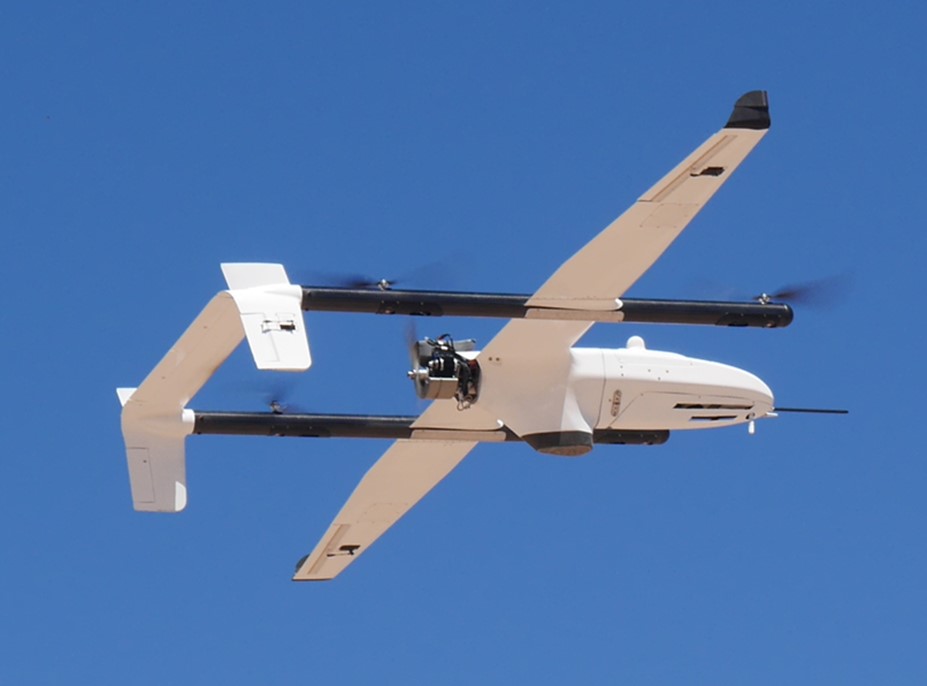ARTICLE PROVIDED BY: PATRICIA QUINN (PMEL) AND KENNETH VIERRA, CONTRACT SUPPORT FOR THE NOAA UAS PROGRAM OFFICE
Measurements of vertical profiles of aerosol properties combined with meteorological parameters have primarily been limited to the use of manned aircraft which are expensive to operate and require extensive ground support. Unmanned Aerial Systems (UAS) provide a means to obtain these measurements at much lower cost from ships and land based regions not easily accessed by manned aircraft. The lower cost of UAS operations allows for frequent flights as part of long term monitoring or during intensive field experiments. These observations will help to improve air quality forecasts including those related to emissions from forest fires and industrial activities. In addition, these observations will be used to improve and validate aerosol radiative forcing estimates computed with coupled chemical transport and climate models. The cost of repeated UAS flights relative to manned aircraft allows for statistically significant data sets of aerosol properties of the lower atmosphere (surface to 12,000 ft). In addition, these measurements address NOAA’s Long-Term Goals of improved understanding of the changing climate system and its impact on health of people and communities due to improved air quality.
In 2018 working with the Pacific Marine Environmental Laboratory (PMEL), L3 Latitude was awarded a Phase II NOAA SBIR to ready the HQ-55 for commercial production. This UAS uses a Hybrid Vertical Take Off and Landing (VTOL) – Fixed Wing (FW) technology to allow for autonomous launch and recovery from confined spaces without the need for a runway or catapult. Once launched, the UAS transitions to fixed wing flight with an endurance of up to 10 hours, a ceiling of 12,000 ft, and the ability to carry up to a 15 lb payload. The payload nose cone can be used to house different instrumentation dependent upon the mission. One of these payloads contains instruments for the measurement of total particle number concentration, particle number concentration as a function of particle size, aerosol light absorption coefficient, aerosol optical depth, and aerosol chemical composition. Dr. Patricia Quinn (PMEL) serves as the technical point of contact (TPOC) for the project. Successful test flights with the aerosol payload onboard the HQ-55 took place in April 2019 at the Florence Military Range near Tucson, AZ. An altitude of 7500 ft. MSL (9,300 ft. density altitude) with data from all functioning payload instruments recorded onboard.
With assistance from UAS Program Office, SBIR acceptance testing is planned to be conducted at-sea May 28 to June 1, 2019 with L3 Latitude’s HQ-55 (Figure 1). These first shipboard flights of the HQ-55 will take place on the NOAA RV Ronald H. Brown (Figure 2) during a transit from Woods Hall, MA to Charleston, SC. The goal of this acceptance testing and exercise is to continue to demonstrate the upgraded Hybrid Quadrotor (HQ) technology from a ship with limited deck space and to validate the moving baseline differential GPS and ship landing logic. The UAS will take off from the ship, switch to fixed wing flight, and return and land on the ship. This series of events will be repeated multiple times to build up experience with ship board operations. In addition atmospheric profiles are planned to be completed in the Area of Operation of the ship.



The ultimate goal is to transition “Shipboard Launch and Recovery of Unmanned Aerial Systems with Aerosol Payload Capabilities” from a research platform to a long-term sustained operational capability within NOAA/OAR with NOAA/OMAO providing logistical and asset support.
The next phase of research advancement is to expand on these successes and provide for an operational capability. As part of this plan, NOAA will acquire the UAS which will be maintained and flown by NOAA’s Aircraft Operations Center (AOC), part NOAA’s Office of Marine and Aviation Operations in support of scientific NOAA missions. Initial operational use of the UAS is planned by PMEL and NOAA ESRL Physical Sciences Division (NOAA/ESRL/PSD.

